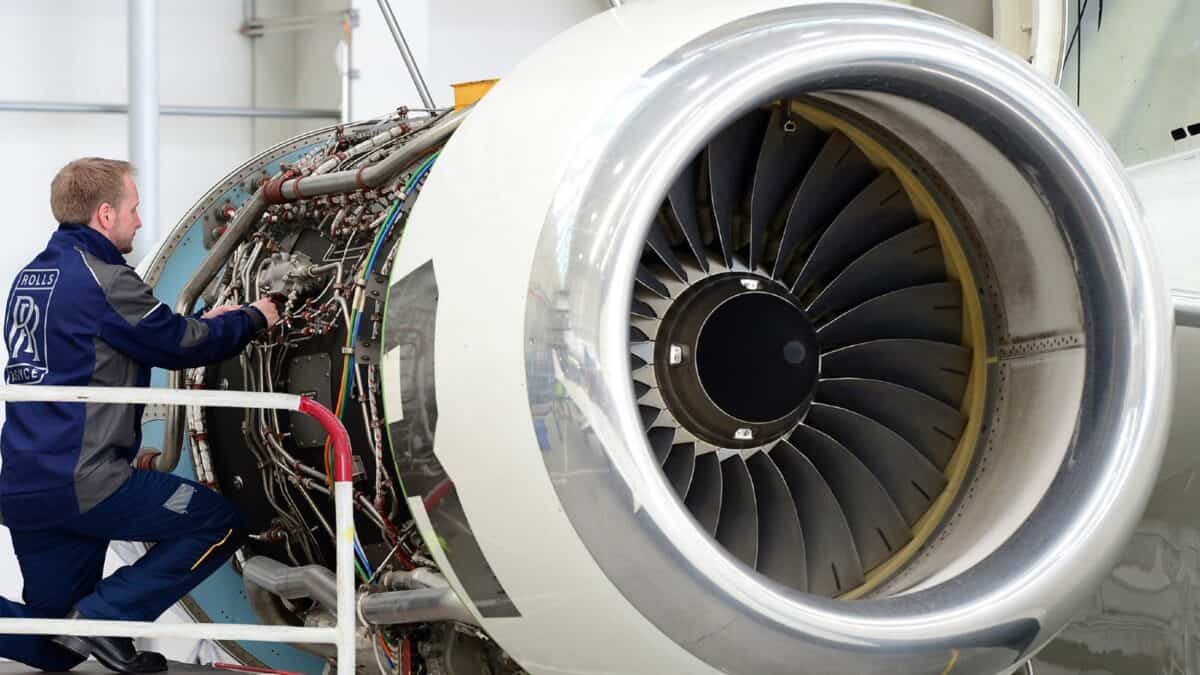Recent announcements by Rolls-Royce (LSE: RR) on plans for improving its bottom line are clear — the stock market’s response duly reflected in the blue-chip’s share price is even clearer.
I bought shares in this aerospace and engineering giant over Q4 2020 at an average price of 81p and held firm. Three years on, I am seeing gains of over 235% and a price above 270p.
But as Roll-Royce inches closer to the 300p share price mark – a level it hasn’t touched since June 2019 – is it worth cashing out with its price-to-earnings (P/E) ratio of over 137? Has an opportunity to buy low perhaps passed with limited future gains?
Should you invest £1,000 in Rolls-Royce right now?
When investing expert Mark Rogers has a stock tip, it can pay to listen. After all, the flagship Motley Fool Share Advisor newsletter he has run for nearly a decade has provided thousands of paying members with top stock recommendations from the UK and US markets. And right now, Mark thinks there are 6 standout stocks that investors should consider buying. Want to see if Rolls-Royce made the list?
The answers depend on investment horizons. Eyeing its long-term potential, I am inclined to buy more. Or at the very least hold firmly on to the shares I already have in my portfolio. Here’s why.
Targeting a “step change”
CEO Tufan Erginbilgic kick-started Rolls-Royce’s turnaround in January 2023 when he joined the company. This has since gathered further momentum.
At the company’s recent capital markets day, Erginbilgic announced his ambitions of quadrupling Rolls-Royce’s profits by 2027 and making it “financially stronger and more resilient”.
Targeting a “step change”, within five years, Rolls-Royce wants to deliver an annual profit of £2.5-2.8bn at an operating margin of 13-15%. Free cash flow is forecast in the £2.8-£3.1bn range. The FTSE 100 company also hopes to deliver savings of £400-£500m over the medium term.
Additionally, plans are afoot to sell around £1.5bn of its assets and re-allocate the proceeds to business areas where Rolls-Royce can generate better returns.
Unsurprisingly, across key business divisions, Civil Aerospace – with a bulging multibillion dollar order book and very little competition – will be the biggest investment beneficiary. Its operating divisional margins are expected to improve from 2.5% in 2022 to 15-17% by 2027. And there’s more.
Futureproofing and flying high?
Rolls-Royce is making a big push on sustainable aviation fuel (SAF) to futureproof its business. Its flagship Trent 1000 aircraft engines recently powered the world’s first transatlantic flight run entirely on SAF, in partnership with Virgin Atlantic. Last year, it tested a hydrogen-powered jet engine with easyJet.
While plans are afoot to sell electrical aircraft engine and automated transportation systems businesses “at the right time and price”, there’s renewed faith in Rolls-Royce Power Systems, with the 2027 margin target set at 12-14%.
The division includes sustainable power brand mtu and sits happily alongside Rolls-Royce’s small modular reactors (SMRs) venture for nuclear energy.
Rewards versus turbulence
To me, Roll-Royce’s headline targets look achievable. Its approach to sustainability and cleantech also seems realistic. These may provide a share price increase to 300-350p, which is a range it’s currently just shy of. I am also expecting a nominal / very low yield “re-starter” dividend at some point.
Caveats do apply. While corporate targets may appear achievable, a lot will be riding on Rolls-Royce’s cyclical civilian aerospace business. It won’t fully shake off the Covid downturn until late 2024. That’s why near-term price gains will likely be limited beyond 300p.
Rolls-Royce is still verging on a negative equity position, i.e. its liabilities outweigh its assets. So, I also doubt there will be any dividends offered before the end of 2024 either.
On balance, I believe the worst to be over for Rolls-Royce, and its recent share price gains may be sustained. Furthermore, its long-term potential convinces me to add more to my portfolio.








